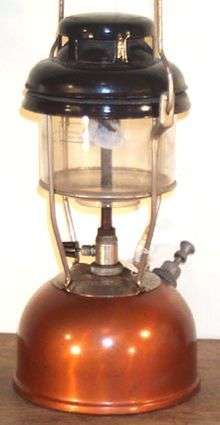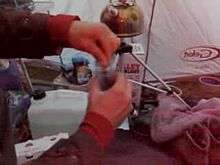Tilley lamp


The Tilley lamp derives from John Tilley’s invention of the hydro-pneumatic blowpipe in 1813 in England. W.H.Tilley were manufacturing pressure lamps at their works in Stoke Newington in 1818, and Shoreditch, in the 1830s. The company moved to Brent Street in Hendon in 1915 during World War I, and started work with paraffin (kerosene) as a fuel for the lamps.
During World War I Tilley lamps were used by the British armed forces, and became so popular that Tilley became used as a generic name for kerosene lamp in many parts of the world, in much the same way as Hoover is used for vacuum cleaners. During the 1920s the company had diversified into domestic lamps, and had expanded rapidly after orders from railway companies. After World War II fears about the poisonous effect of paraffin fumes, and widely available electricity, reduced demand for domestic use. The company moved from Hendon to Ireland in the early 1960s, finally settling in Belfast. It moved back to England in 2000.
-

Large Tilley radiator R55 from 1957
-

Tilley Lamp TL10 from 1922-1946
References
- Jim Dick "A History of Tilley Lamps" ISBN 0-646-39330-8